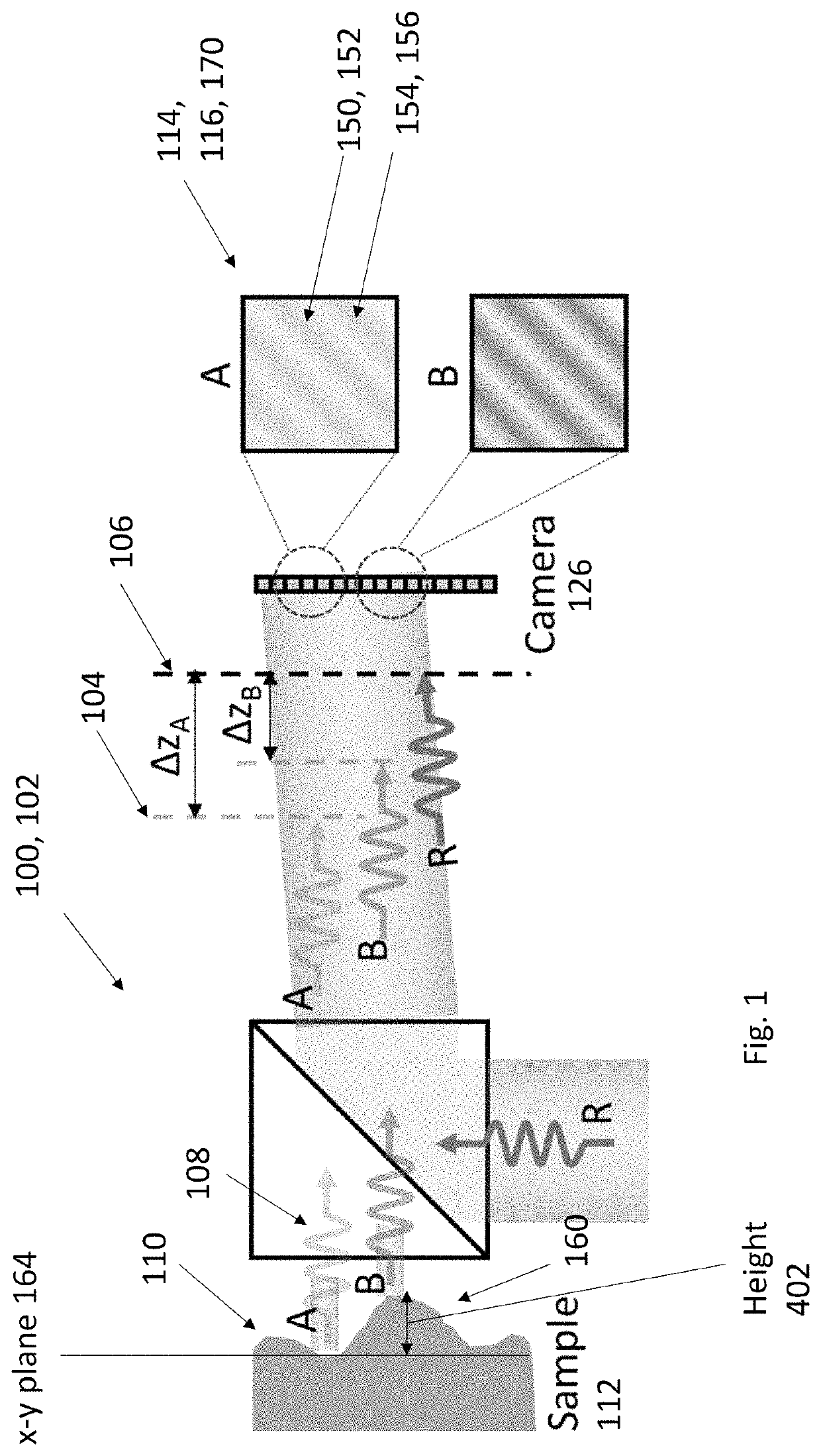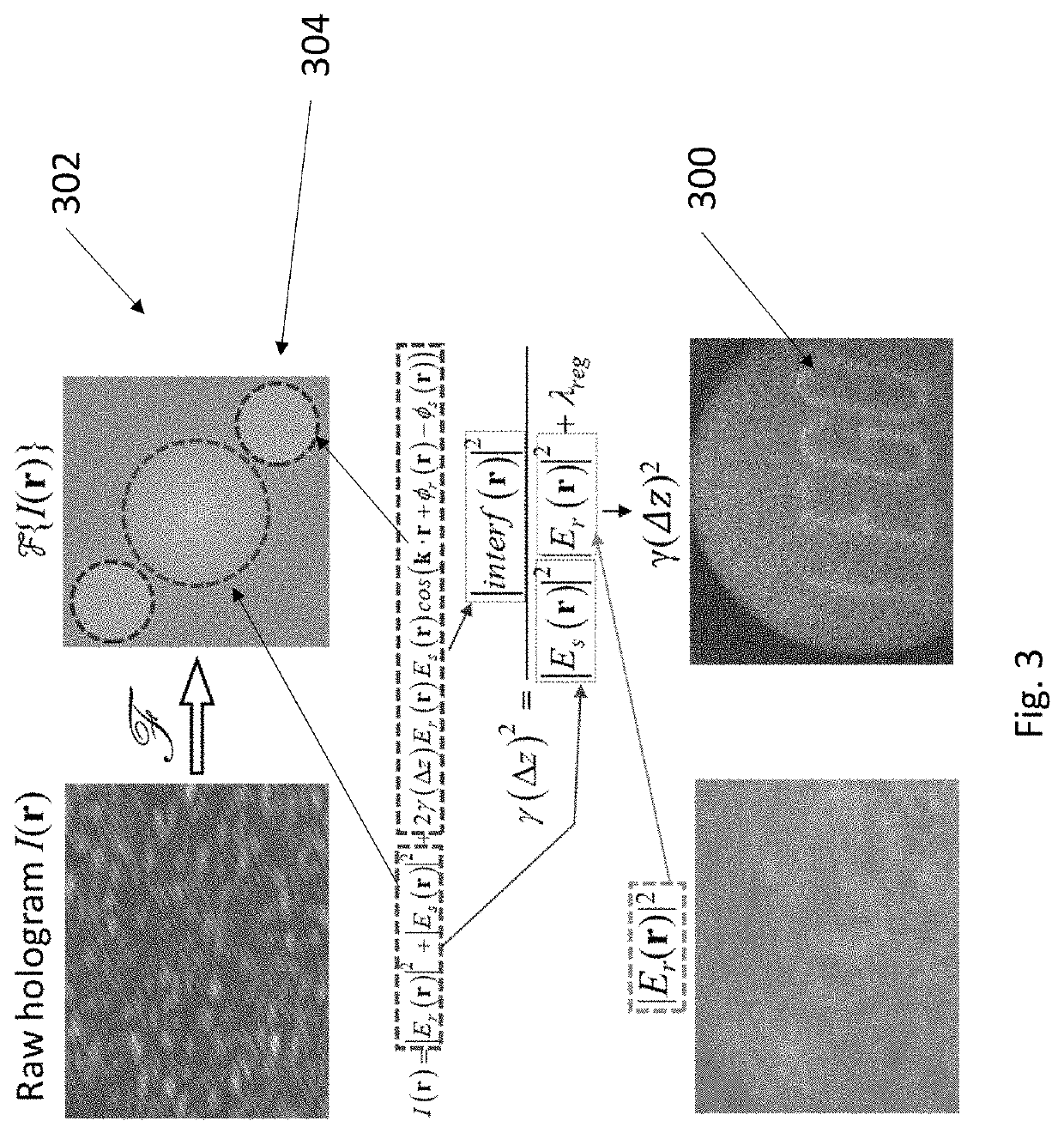Three dimensional (3D) imaging using optical coherence factor (OCF)
a three-dimensional imaging and optical coherence factor technology, applied in image enhancement, image analysis, instruments, etc., can solve the problems of complex algorithms, inefficient 3d imaging methods, and ambiguities in the height profile reconstruction, so as to achieve the effect of simple algorithms, multiple 2d image frames, and simple 3d imaging methods
- Summary
- Abstract
- Description
- Claims
- Application Information
AI Technical Summary
Benefits of technology
Problems solved by technology
Method used
Image
Examples
example
[0051]An example experimental setup of OCF is shown in FIG. 2. The laser beam (532 nm, 150 mW, CrystaLaser Inc. USA) is first split into two arms by a polarizing beam splitter (PBS). Light on arm R1 serves as the reference beam and light on arm R2 illuminates the sample. The sample is imaged onto the camera (GX1920, Allied Vision) by a 4-f system. A tilted plane wave (R1) is added on the camera by BS3 and interferes with light from arm R1, creating an off-axis hologram on the camera. We perform pathlength difference adjustments on R1 such that 1) the pathlength difference between the two arms is in the monotonic region of the laser coherence profile, and 2) the whole scene in DoF interferes with the reference beam. The coherence factor is retrieved from the hologram by using off-axis holography [11]. The coherence profile of the laser was characterized before imaging experiments. To measure the coherence profile, we put a mirror as the sample, and axially scanned the reference mirro...
PUM
 Login to View More
Login to View More Abstract
Description
Claims
Application Information
 Login to View More
Login to View More - R&D
- Intellectual Property
- Life Sciences
- Materials
- Tech Scout
- Unparalleled Data Quality
- Higher Quality Content
- 60% Fewer Hallucinations
Browse by: Latest US Patents, China's latest patents, Technical Efficacy Thesaurus, Application Domain, Technology Topic, Popular Technical Reports.
© 2025 PatSnap. All rights reserved.Legal|Privacy policy|Modern Slavery Act Transparency Statement|Sitemap|About US| Contact US: help@patsnap.com



